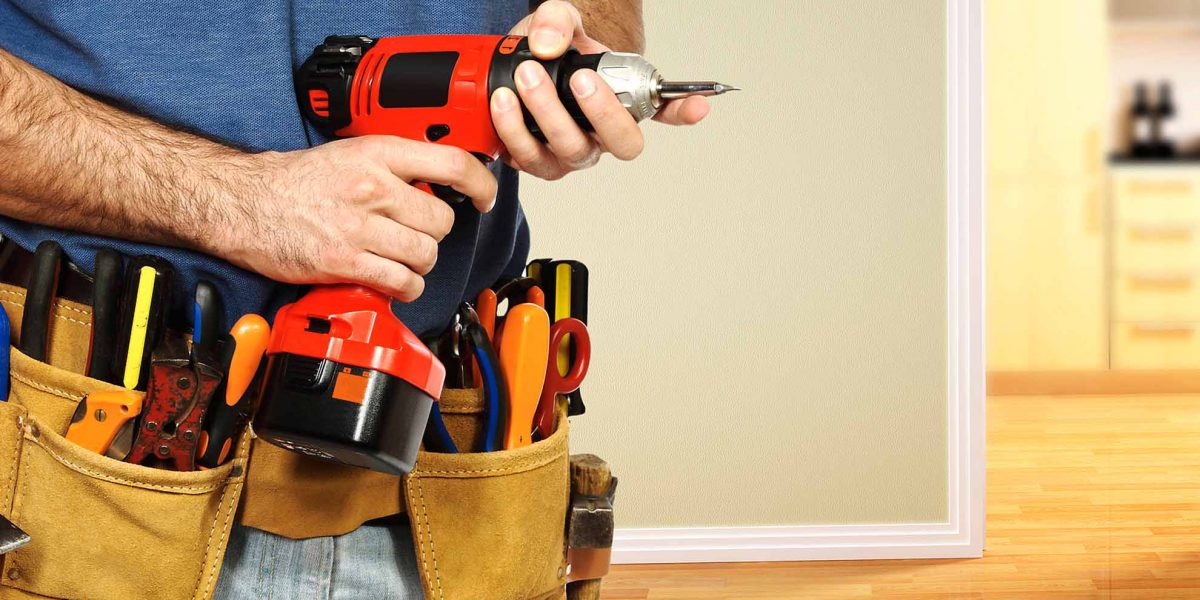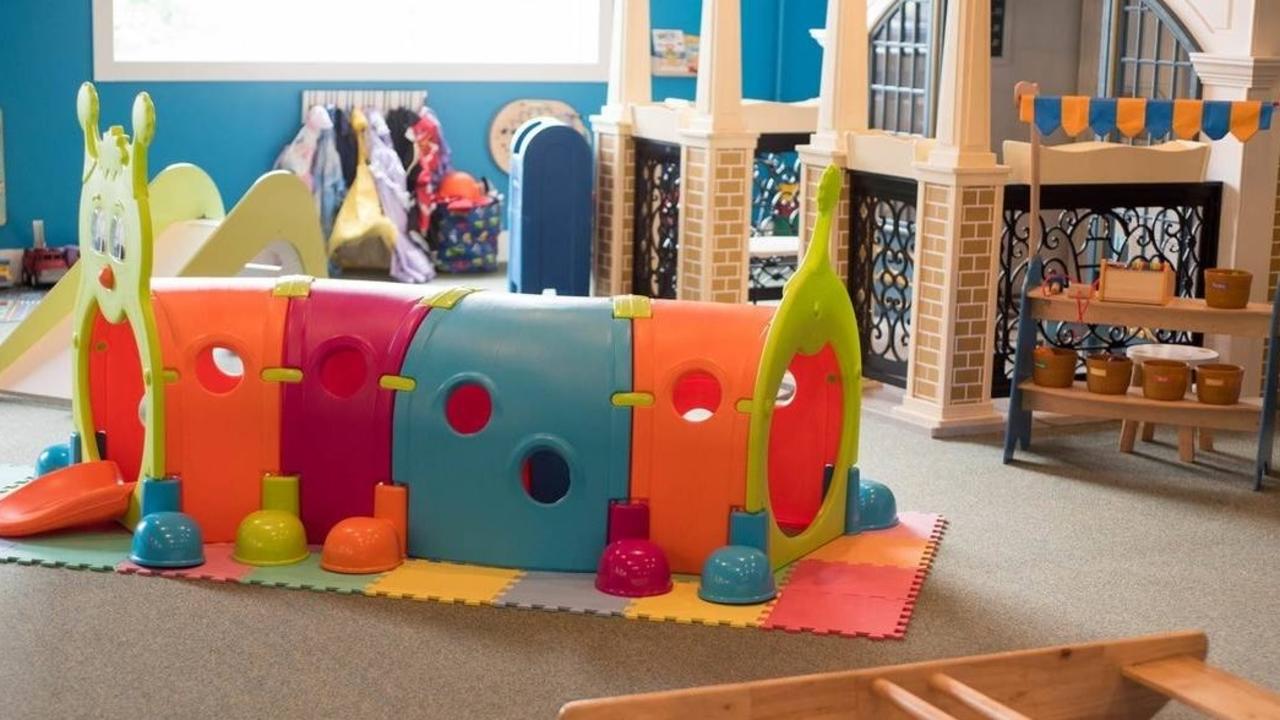Home>Home Maintenance>How To Start A Home Repair Business


Home Maintenance
How To Start A Home Repair Business
Modified: March 6, 2024
Learn how to start a successful home repair business with our comprehensive guide. Get expert tips and advice on home maintenance, marketing, and more.
(Many of the links in this article redirect to a specific reviewed product. Your purchase of these products through affiliate links helps to generate commission for Storables.com, at no extra cost. Learn more)
Introduction
Starting a home repair business can be a rewarding and profitable venture for those with a knack for fixing things and a passion for helping homeowners maintain their properties. Whether you have experience in plumbing, electrical work, carpentry, or general home maintenance, there is a demand for skilled professionals who can tackle a wide range of repair and maintenance tasks.
In this article, we will guide you through the essential steps to start your own home repair business. From assessing your skills and interests to marketing your services and managing your finances, we will cover everything you need to know to get started on the path to success.
Running a successful home repair business requires a combination of technical skills, business acumen, and excellent customer service. By following these steps and staying dedicated to your craft, you can build a reputation as a reliable and trusted professional in your local community.
So, let’s dive in and explore the necessary steps to start your own home repair business. Whether you’re a seasoned professional looking to strike out on your own, or a skilled DIY enthusiast ready to turn your passion into a business, this guide will help you get started on the right foot.
Key Takeaways:
- Assess your skills, research the market, and create a solid business plan before starting a home repair business. Understand your target audience and obtain necessary licenses and permits for legal operation.
- Provide exceptional customer service, manage finances effectively, and focus on continuous growth to succeed in the home repair industry. Prioritize professionalism, reliability, and innovation for long-term success.
Read more: How To Start An Insulation Business
Assessing your skills and interests
Before diving into the world of home repair businesses, it’s important to take some time to assess your skills and interests. This will help you identify your areas of expertise and determine which services you can offer to potential clients.
Start by making a list of the home repair skills you possess. Consider your previous work experience, any certifications or training you have, and your ability to handle different types of repairs. Are you skilled in plumbing, electrical work, carpentry, painting, or general handyman tasks? Take note of these skills as they will form the foundation of the services you can offer.
Next, think about your interests and passion. What aspects of home repair do you enjoy the most? Maybe you love the challenge of solving electrical problems or find satisfaction in renovating kitchens and bathrooms. Identifying your interests will help you focus on the areas where you can excel and provide the best service to your clients.
It’s also essential to assess your physical abilities. Home repair work can be physically demanding, requiring strength, agility, and endurance. Be honest with yourself about your physical limitations and consider whether certain tasks may require additional help or subcontractors.
Furthermore, consider the level of expertise you possess in each area. Are you a beginner, intermediate, or expert? This will help you determine the complexity of projects you can handle and set appropriate pricing for your services.
Lastly, research the local market to understand the demand for specific home repair services. Are there any gaps in the market? Are there already well-established competitors in the area? By understanding the market landscape, you can identify potential niches or areas where you can differentiate yourself from the competition.
Assessing your skills and interests will give you a clear understanding of your strengths and weaknesses, allowing you to position yourself effectively in the market. It will also help you determine the scope of services you can offer and develop a compelling value proposition for your target audience. So take the time to evaluate your skills, interests, and market demand before moving forward with your home repair business.
Researching the market
Researching the market is a crucial step in starting a successful home repair business. By understanding the current demand, trends, and competition in your local area, you can make informed decisions and develop a solid business strategy.
Begin by identifying your target market. Who are your potential customers? Are they homeowners, property managers, or businesses? Understanding your target audience will help shape your marketing efforts and tailor your services to meet their specific needs.
Next, analyze the competition. Identify other home repair businesses in your area and evaluate their strengths and weaknesses. What services do they offer? How do they differentiate themselves? Are there any gaps in the services they provide that you can fill? This information will help you position your business uniquely and find opportunities to stand out in the market.
Additionally, consider the current demand for home repair services. Are there any particular services that are in high demand? For example, during certain seasons, services such as air conditioning repair or roof maintenance might be more sought after. Understanding these trends will allow you to align your services with the needs of your target market and ensure a steady stream of customers.
Furthermore, research pricing and industry standards. What are the average rates for various home repair services in your area? It’s important to strike a balance between competitive pricing and ensuring your business remains profitable. Consider factors such as your skill level, overhead costs, and the value you provide to customers when determining your pricing structure.
Don’t forget to explore potential partnerships or collaborations as well. Building relationships with local contractors, suppliers, or real estate agents can help generate referrals and establish your credibility in the industry.
Lastly, familiarize yourself with any regulations or licensing requirements for home repair businesses in your area. Compliance with local laws and regulations is essential to operate legally and establish trust with your customers.
By conducting thorough market research, you can gain valuable insights into your target market, competition, industry trends, and pricing. This knowledge will enable you to make informed decisions, set realistic goals, and differentiate your home repair business in a competitive market. So take the time to research the market before launching your business to maximize your chances of success.
Identifying your target audience
Identifying your target audience is a critical step in building a successful home repair business. Understanding who your ideal customers are will allow you to tailor your services, marketing messages, and customer interactions to meet their specific needs and preferences.
When identifying your target audience, consider the following factors:
1. Demographics: Start by analyzing the demographic characteristics of your potential customers. Consider factors such as age, gender, income level, household size, and location. Understanding these demographics will give you insights into their lifestyle, preferences, and purchasing power.
2. Homeowners vs. businesses: Determine whether you will primarily focus on residential homeowners or if there is a demand for your services from businesses, property managers, or real estate agents. Each segment may have different needs and expectations, so it’s essential to tailor your marketing and services accordingly.
3. Types of homes: Consider the types of properties your target audience owns. Are they single-family homes, apartments, condos, or commercial buildings? Understanding the types of properties your customers have will help you specialize your services and anticipate the specific repair and maintenance needs they may have.
4. Pain points and needs: Identify the common pain points and needs of your target audience. What are the most common home repairs or maintenance tasks they encounter? By addressing these pain points and offering solutions, you can position yourself as a valuable resource and build trust with your customers.
5. Lifestyle and preferences: Consider the lifestyle and preferences of your target audience. Are they busy professionals looking for quick and efficient services, or are they homeowners who value attention to detail and personalized care? Understanding their preferences will help you deliver a customer experience that aligns with their expectations.
6. Competitive landscape: Evaluate your competition and identify any gaps in the market. Is there a specific niche or underserved segment that you can target? Finding a unique selling proposition or specializing in a specific area of home repair can help differentiate your business and attract your target audience.
Once you have identified your target audience, tailor your marketing efforts to reach them effectively. Use appropriate channels such as local advertisements, online listings, social media, or word-of-mouth referrals to reach your target audience. Craft your marketing messages to address their pain points and highlight the benefits of your services.
By accurately identifying and understanding your target audience, you can develop a targeted marketing strategy, provide personalized services, and build strong relationships with your customers. Understanding their needs and preferences will enable you to deliver a superior customer experience that sets you apart from your competition.
Creating a business plan
Creating a business plan is a crucial step in establishing a solid foundation for your home repair business. It acts as a roadmap for your venture, outlining your goals, strategies, and financial projections. A well-crafted business plan will not only guide your decision-making process but also attract potential investors and lenders.
Here are the key elements to include in your business plan:
1. Executive Summary: Provide an overview of your business, including your mission statement, vision, and goals. Summarize the key points of your business plan to grab the attention of readers.
2. Company Description: Describe your business in detail. Explain the types of home repair services you offer, your target market, and how you differentiate yourself from competitors. Share your business’s legal structure (sole proprietorship, partnership, or LLC) and highlight any unique selling propositions.
3. Market Analysis: Conduct an in-depth analysis of the market and industry you’re entering. Identify the size of the market, trends, and growth opportunities. Analyze your competitors by assessing their strengths, weaknesses, and market share. This section demonstrates your understanding of the market and how you plan to position your business for success.
4. Services and Pricing: Outline the specific services you offer and the pricing structure for each service. Explain how you calculate your pricing, taking into account factors such as material costs, labor, overhead, and profit margin. If you offer different packages or tiers of services, detail them in this section.
5. Marketing and Sales Strategy: Describe your marketing and sales approach. Explain how you plan to attract customers, build brand awareness, and generate leads. Outline your online and offline marketing tactics, including social media, website, advertising, and customer referrals. Detail your sales process and customer acquisition channels.
6. Operational Plan: Explain the day-to-day operations of your business, including your service delivery process, tools and equipment required, and any subcontractors or employees you may hire. Outline your workflow, scheduling system, and customer communication processes to ensure efficiency and quality service.
7. Financial Projections: Present a detailed financial forecast, including startup costs, projected revenue, and expenses. Include a break-even analysis and cash flow projections for the first few years of operation. This section demonstrates the financial viability of your business and helps you track progress against your goals.
8. Management and Organization: Provide information about the key members of your team and their roles and responsibilities. Highlight their relevant experience and expertise in the home repair industry. If you have any partners or advisors, include their details in this section.
9. Funding Request: If you are seeking funding from investors or lenders, clearly state your funding requirements and how the funds will be allocated. Explain how the investment will help grow your business and generate returns for the investors.
10. Appendix: Include any supporting documents, such as licenses, certifications, resumes, or market research data, in the appendix section.
Remember to revisit and update your business plan regularly as your business evolves. A well-crafted business plan serves as a valuable tool for decision-making and tracking progress toward your goals. It also provides a roadmap for future growth and helps you stay focused on your long-term vision for your home repair business.
Read more: How To Start A Chimney Cleaning Business
Obtaining necessary licenses and permits
Obtaining the necessary licenses and permits is a vital step in setting up your home repair business. Compliance with local, state, and federal regulations ensures that you operate legally, protects your business and clients, and builds trust with your customers.
Here are some licenses and permits commonly required for home repair businesses:
1. Business License: Most jurisdictions require a general business license to operate legally. Check with your local government or municipality to understand the specific requirements and procedures for obtaining a business license. It may involve filling out an application, paying a fee, and providing certain documentation.
2. Contractor’s License: Depending on the type of home repair services you offer, you may need a contractor’s license. This license demonstrates that you have the necessary skills, experience, and qualifications to perform specialized work. The requirements vary by location and may involve passing an exam or meeting specific educational and experience criteria.
3. Trade Licenses: Certain trades within the home repair industry, such as plumbing or electrical work, may require additional trade-specific licenses or certifications. Research the requirements for your specific trade and ensure you have the necessary qualifications to perform the work legally and safely.
4. Insurance Coverage: Obtain appropriate insurance coverage to protect your business, employees, and clients. General liability insurance protects against property damage or injuries that may occur during your work. Workers’ compensation insurance is necessary if you have employees, as it covers medical expenses and lost wages in the event of worker injuries. Insurance requirements may vary depending on your location and the scope of your services.
5. Building Permits: If your home repair projects involve major renovations, structural changes, or additions, you may need to obtain building permits. Building permits ensure compliance with local building codes and regulations, protecting the safety and integrity of the structures. Check with your local building department to determine when permits are required and the process for obtaining them.
6. Environmental Permits: Some home repair activities, such as asbestos removal or hazardous waste disposal, may require specific environmental permits. These permits ensure that you handle and dispose of hazardous materials safely and protect the environment.
7. Other Permits and Certifications: Depending on your location and the nature of your business, there may be additional permits or certifications required. For example, if you offer HVAC services, you may need certifications for handling refrigerants. Research industry-specific requirements to ensure you have all the necessary permits and certifications in place.
It’s essential to thoroughly research the licensing and permit requirements applicable to your specific location and services. Contact the appropriate government agencies, such as the local city or county clerk’s office, building department, or state contractor licensing board, to understand the specific requirements and procedures.
By obtaining the necessary licenses and permits, you demonstrate your commitment to operating legally and professionally. It not only protects your business and clients but also contributes to a positive reputation and builds trust within the community. Don’t overlook this important step in setting up your home repair business.
Securing financing options
Securing financing is an essential aspect of starting a home repair business. Whether you need funds for equipment purchase, marketing expenses, hiring employees, or covering operating costs, exploring different financing options will help you obtain the necessary capital to launch and grow your business. Here are some financing options to consider:
1. Personal Savings: Tapping into your personal savings is a common way to fund your home repair business. If you have saved up a significant amount of money, using your own funds can give you full control over your business and eliminate the need for debt payments or interest charges. However, evaluate your savings carefully to ensure you have enough to cover expenses while maintaining a financial safety net.
2. Loans from Banks or Credit Unions: Traditional lenders, such as banks or credit unions, offer various loan options for small businesses. These loans may be secured or unsecured, and the interest rates and terms will depend on your creditworthiness, business plan, and collateral. Prepare a comprehensive business plan and financial projections to present to lenders, demonstrating the viability of your business and your ability to repay the loan.
3. Small Business Administration (SBA) Loans: The U.S. Small Business Administration offers loan programs specifically designed for small businesses. SBA loans typically have favorable terms and lower interest rates compared to traditional bank loans. However, the application process can be more involved and time-consuming. Research the different SBA loan programs and determine if you meet the eligibility criteria.
4. Business Line of Credit: A business line of credit allows you to access funds as needed, similar to a credit card. It provides flexibility in managing cash flow, especially during seasonal fluctuations or unexpected expenses. With a line of credit, you only pay interest on the funds you use. Explore options at different banks or online lenders and compare terms, interest rates, and repayment terms.
5. Equipment Financing: If you need to purchase specialized tools or equipment for your home repair business, consider equipment financing. This allows you to spread the cost of equipment over a period of time while using the equipment as collateral. Look for lenders that specialize in equipment financing and compare terms and interest rates.
6. Crowdfunding and Angel Investors: For unique or innovative home repair business ideas, crowdfunding platforms or angel investors can be a viable source of financing. Crowdfunding allows you to raise funds from a large group of individuals who believe in your business concept. Angel investors, on the other hand, provide capital in exchange for equity or a stake in your business. Research crowdfunding platforms and network with potential investors who may be interested in your industry.
7. Grants and Government Programs: There may be grants or government programs available specifically for small businesses in the home repair industry. Research local or federal grant opportunities and check if you qualify for any programs. These funds do not need to be repaid, making them an attractive option for financing your business.
Remember to carefully evaluate the costs, terms, and requirements associated with each financing option. Develop a solid business plan and financial projections to support your loan applications. It’s advisable to consult with a financial advisor or accountant who can guide you through the process and help you make informed financial decisions.
Securing financing options is a crucial step in launching and growing your home repair business. With sufficient capital, you can invest in the necessary resources, marketing efforts, and operational expenses to attract clients and establish a strong foundation for your business.
Before starting a home repair business, make sure to research your local market, obtain necessary licenses and insurance, and create a solid business plan.
Setting up your workspace and acquiring tools
Setting up a functional workspace and acquiring the right tools is essential for a successful home repair business. A well-equipped and organized workspace can enhance your efficiency and productivity while enabling you to deliver high-quality services to your clients. Here are some key steps to consider:
1. Determine your workspace requirements: Assess your business needs and determine the size and layout of your workspace. Whether you plan to operate from a dedicated office or work out of your garage, ensure there is enough space to store tools, equipment, and materials. Consider any specific requirements, such as proper ventilation, electrical outlets, or storage cabinets.
2. Organize your workspace: A cluttered and disorganized workspace can hinder your productivity and make it difficult to locate tools when you need them. Invest in storage solutions such as shelving, cabinets, and toolboxes to keep your workspace tidy and efficient. Label and categorize tools and materials for easy access.
3. Acquire essential tools: Identify the tools and equipment necessary for your specific home repair services. This may include hand tools such as hammers, screwdrivers, wrenches, and pliers, as well as power tools like drills, saws, and sanders. Consider the quality and durability of the tools to ensure they can withstand regular use and deliver professional results.
4. Research reputable suppliers: Look for reputable suppliers or wholesalers for your tools and equipment. Compare prices, quality, and warranties to find the best value for your investment. Consider joining trade associations or networking with other professionals in the industry to gain insights and recommendations for reliable suppliers.
5. Invest in safety equipment: Safety should be a top priority when working in the home repair industry. Equip yourself with essential safety gear such as gloves, goggles, hard hats, protective clothing, and respiratory masks. Ensure you have a first aid kit readily available in your workspace.
6. Consider specialized tools: Depending on your niche or specific services, you may need specialized tools or equipment. For example, if you offer plumbing services, investing in pipe cutters, wrenches, and drain snakes would be essential. Research the tools needed for your specialty and ensure you have them available to provide comprehensive services to your clients.
7. Maintain and upgrade your tools: Regular maintenance and proper storage of your tools are crucial for their longevity and functionality. Clean and lubricate your tools after each use to prevent rust and ensure optimal performance. Regularly inspect your equipment for any signs of wear and tear and replace or repair them as needed.
Remember to factor the cost of tools and equipment into your overall budget and consider them as necessary investments in your business. Quality tools that are well-maintained will not only enhance your efficiency but also project a professional image to your clients.
By setting up an organized workspace and acquiring the right tools, you’ll be equipped to tackle various home repair projects efficiently and deliver exceptional service to your clients. A well-prepared workspace lays the foundation for a successful and thriving home repair business.
Hiring employees or subcontractors
As your home repair business grows, you may find it necessary to hire additional help to meet the demands of your clients. Hiring employees or subcontractors can provide valuable assistance, allowing you to take on more projects and expand your range of services. Here are some key considerations when hiring employees or subcontractors:
1. Determine your needs: Assess your current workload and identify the specific skills and expertise you require. Determine whether you need full-time employees or if subcontractors on a project-by-project basis would be more suitable. Consider the type of services you offer and the volume of work you anticipate to make an informed decision.
2. Define job roles and responsibilities: Clearly outline the roles and responsibilities for the positions you intend to fill. Whether you’re hiring employees or subcontractors, having well-defined job descriptions will help you attract the right candidates and ensure everyone understands their responsibilities.
3. Recruitment and selection: Develop a recruitment strategy to attract qualified candidates. Advertise job openings on job boards, local classifieds, or industry-specific websites. Utilize your professional network and consider referrals from trusted sources. Screen applicants based on their experience, qualifications, and references. Conduct interviews to assess their technical skills, fit with your company culture, and their ability to work well with your existing team.
4. Compliance with employment laws: Familiarize yourself with local labor laws and regulations regarding employment. Make sure you comply with requirements such as minimum wage, overtime compensation, workers’ compensation insurance, and employment taxes. Consult with an employment attorney or HR professional to ensure you abide by all legal obligations.
5. Onboarding and training: Once you have selected your employees or subcontractors, provide thorough onboarding and training to familiarize them with your company’s policies, procedures, and safety protocols. Offer training on specific job tasks and provide resources for ongoing skill development to ensure the quality of their work aligns with your standards.
6. Communication and collaboration: Effective communication is crucial when working with employees or subcontractors. Clearly communicate your expectations, project requirements, and timelines. Foster open lines of communication to address any questions or concerns promptly. Emphasize collaboration and teamwork to create a positive work environment.
7. Performance management: Regularly assess the performance of your employees or subcontractors. Provide constructive feedback and recognize their contributions. Set clear performance goals to motivate and encourage continuous improvement. Address any performance issues promptly and take necessary actions to ensure the quality of work remains high.
8. Contracts and agreements: Prepare written contracts or agreements with both employees and subcontractors that outline their roles, compensation, responsibilities, confidentiality clauses, and any other relevant terms. Consult with a legal professional to ensure your contracts comply with local laws and adequately protect your interests.
Remember, hiring employees or subcontractors is a significant responsibility, and it’s essential to build a reliable and competent team. Select team members who align with your company’s values and demonstrate a commitment to delivering high-quality service to your clients. By effectively managing your team, you can enhance productivity, expand your service offerings, and ultimately, grow your home repair business.
Read more: How To Start A Home Renovation Business
Marketing and advertising your business
Marketing and advertising play a crucial role in promoting your home repair business and attracting clients. Implementing effective marketing strategies will help you raise awareness, build your brand, and generate leads. Here are some key steps to consider when marketing and advertising your business:
1. Define your target audience: Clearly identify your target audience based on demographics, location, and specific needs. This will help you focus your marketing efforts and tailor your messages to appeal to your ideal clients.
2. Develop a compelling brand: Create a strong brand identity that reflects your expertise, professionalism, and values. Develop a memorable logo, consistent color scheme, and professional website that showcases your services and testimonials from satisfied customers. Your brand should create a positive impression and differentiate you from competitors.
3. Build an online presence: Establish a strong online presence through a website and social media profiles. Your website should be user-friendly, mobile-responsive, and optimized for search engines. Regularly update your website with informative content, blog posts, and project portfolios to demonstrate your expertise and attract potential clients. Leverage social media platforms, such as Facebook, Instagram, or LinkedIn, to engage with your audience and share valuable content and updates about your business.
4. Local SEO optimization: Implement local search engine optimization (SEO) strategies to improve your online visibility and rank higher in local search results. Optimize your website with relevant keywords, meta tags, and localized content. Create and optimize your Google My Business listing to appear in local maps and directories. Encourage satisfied clients to leave reviews and testimonials online to build credibility and attract more customers.
5. Networking and referrals: Networking with other professionals in the home repair industry, such as contractors, real estate agents, or interior designers, can be highly beneficial. Build relationships and seek opportunities for collaboration or referrals. Establish a referral program to incentivize satisfied customers to refer your services to their friends, family, and acquaintances.
6. Local advertising: Consider local advertising options to reach your target audience. Advertise in local newspapers, directories, or home improvement magazines. Sponsor community events or offer educational workshops to raise awareness of your services. Participate in local trade shows or home improvement expos to showcase your expertise and connect with potential clients.
7. Content marketing: Educate and engage your audience through content marketing. Create informative blog posts, how-to guides, or videos that address common home repair issues or provide useful tips. Share this content on your website, social media channels, or through email newsletters to demonstrate your expertise and position yourself as a trusted authority.
8. Online reviews and testimonials: Positive online reviews and testimonials can significantly influence the decision-making process for potential clients. Encourage satisfied customers to leave reviews on platforms such as Google, Yelp, or Angie’s List. Monitor and respond to reviews, both positive and negative, to show that you value customer feedback and are committed to providing excellent service.
9. Track and measure results: Regularly analyze and measure the effectiveness of your marketing efforts. Use tools like Google Analytics or social media insights to track website traffic, engagement, and conversion rates. Monitor which marketing channels generate the most leads and adjust your strategies accordingly.
Effective marketing and advertising strategies are essential for the growth of your home repair business. By employing a mix of online and offline tactics, building a strong brand, and focusing on targeted marketing efforts, you can attract more clients and establish a solid reputation in the industry.
Providing exceptional customer service
Providing exceptional customer service is crucial for the success and growth of your home repair business. Positive customer experiences lead to client satisfaction, repeat business, and valuable referrals. Here are some key principles to follow when striving for exceptional customer service:
1. Clear communication: Maintain open, transparent, and effective communication with your clients. Listen attentively to their needs, concerns, and expectations. Clearly explain the scope of work, timelines, and any potential challenges upfront to avoid misunderstandings.
2. Prompt response: Respond promptly to inquiries, whether they are phone calls, emails, or online messages. Acknowledge receipt of queries and provide realistic timelines for a detailed response. Promptly address any service issues or concerns that may arise during or after a project.
3. Professionalism and reliability: Demonstrate professionalism and reliability in all customer interactions. Be punctual for appointments and project deadlines. Show respect for your clients’ time and property by keeping your work area clean and adhering to agreed-upon schedules.
4. Quality workmanship: Deliver high-quality workmanship on every project. Whether it’s a small repair or a major renovation, strive for excellence in your craft. Pay attention to detail and ensure that the finished result meets or exceeds your clients’ expectations.
5. Honesty and integrity: Build trust with your clients by being honest and transparent in your dealings. Provide accurate estimates, clearly communicate any changes or updates, and be upfront about potential limitations or challenges. Honesty and integrity are key in maintaining long-term client relationships.
6. Personalization: Treat each client as an individual and personalize your service accordingly. Take the time to understand their unique needs, preferences, and concerns. Tailor your approach and recommendations to align with their specific requirements.
7. Follow-up and customer satisfaction: Follow up with your clients after completing a project to ensure their satisfaction. Seek feedback on their experience and address any concerns or issues promptly. Use this feedback to continually improve your services and make adjustments as necessary.
8. Resolving conflicts: In the event of conflicts or disputes, handle them professionally and efficiently. Actively listen to your clients’ concerns and work towards finding a mutually satisfactory resolution. Strive to turn a potentially negative experience into a positive one by demonstrating your commitment to customer satisfaction.
9. Exceed expectations: Go above and beyond to exceed your clients’ expectations whenever possible. Surprise them with small gestures, such as a handwritten thank-you note or a follow-up call to ensure everything is still satisfactory. By consistently exceeding expectations, you create loyal customers who are more likely to refer your services to others.
10. Continuous improvement: Continuously seek ways to improve your customer service. Stay up-to-date with industry trends and develop your skills to offer innovative solutions. Actively seek feedback from your clients and implement changes based on their input. Embrace a growth mindset and always strive to enhance the overall customer experience.
Exceptional customer service sets you apart from your competitors and fosters long-term client relationships. By prioritizing clear communication, professionalism, quality workmanship, and continuously improving your service, you can build a reputation for excellence in the home repair industry. Your commitment to exceptional customer service will lead to client satisfaction, loyalty, and a thriving business.
Managing your finances and accounting
Effective financial management and accounting practices are crucial for the success and sustainability of your home repair business. Proper management of your finances allows you to make informed decisions, track your profitability, and ensure compliance with tax obligations. Here are some key steps to manage your finances and accounting effectively:
1. Separate business and personal finances: Open a dedicated business bank account to separate your personal and business finances. This simplifies bookkeeping and provides a clear distinction between personal and business expenses. Use business accounts for all income and expenses related to your home repair business.
2. Implement a bookkeeping system: Establish a bookkeeping system to track your income, expenses, and cash flow. This can be done using accounting software or with the help of a professional bookkeeper or accountant. Regularly update your books to ensure accurate financial records.
3. Track your expenses: Keep meticulous records of your business expenses. This includes purchasing tools, equipment, supplies, fuel, employee wages, insurance premiums, and any other costs associated with operating your home repair business. Properly categorize expenses for accurate financial reporting and tax compliance.
4. Invoice promptly and track payments: Send invoices to your clients promptly and establish clear payment terms. Track payments and follow up on any late payments or outstanding invoices to maintain a healthy cash flow. Consider utilizing accounting software that allows you to generate and track invoices, making the process more efficient.
5. Monitor your cash flow: Monitor your cash flow regularly to ensure you have enough funds to cover expenses and plan for future growth. Maintain a cash reserve for unexpected expenses or periods of low revenue. Identify any areas where you can optimize cash flow, such as adjusting payment terms or negotiating discounts with suppliers.
6. Budgeting and financial projections: Develop a budget and financial projections for your home repair business. Set realistic revenue and expense targets based on historical data and market trends. Regularly review and compare your actual financial performance against your budget to identify areas for improvement and make necessary adjustments.
7. Tax compliance: Stay compliant with tax laws and obligations. Understand your tax responsibilities and requirements, such as income tax, sales tax, payroll taxes, and any licensing fees. Keep accurate records and consult with a tax professional to ensure you are meeting your obligations and maximizing available tax deductions.
8. Seek professional guidance: Consider consulting with a financial advisor, bookkeeper, or accountant who specializes in small businesses. They can provide valuable advice, help you streamline your financial processes, and ensure compliance with accounting standards and tax regulations.
9. Track business performance: Regularly review financial statements and key performance indicators (KPIs) to assess the financial health of your home repair business. Analyze profitability, gross margins, and other financial metrics to identify areas of strength and areas that may require improvement.
10. Continuous learning and improvement: Stay informed about financial management best practices and industry trends. Attend workshops, webinars, or seminars on financial management and accounting topics. Continuously educate yourself to enhance your ability to make informed financial decisions for your business.
By effectively managing your finances and accounting practices, you can ensure the financial stability and growth of your home repair business. Proper financial management allows you to make sound business decisions, maintain a healthy cash flow, and meet your tax obligations. With accurate and up-to-date financial information, you can focus on providing excellent service to your clients while building a profitable and sustainable business.
Growing your home repair business
Growing your home repair business is an exciting endeavor that requires strategic planning, continuous improvement, and a customer-centric approach. Here are key steps to expand and scale your business:
1. Refine your services: Continually assess your services and identify opportunities for improvement or expansion. Stay updated on industry trends and new technologies in the home repair field. Consider adding new services that align with the needs and preferences of your target market.
2. Build a strong online presence: Invest in digital marketing strategies to increase your online visibility and attract more clients. Continuously update your website with fresh content and optimize it for search engines to improve organic rankings. Maintain an active presence on social media platforms, engage with your audience, and leverage online reviews and testimonials to build credibility.
3. Expand your network: Build relationships with other professionals in related fields, such as contractors, real estate agents, or interior designers. Attend industry events, join professional organizations, and actively participate in local networking groups. Collaborate on projects or seek referrals from trusted partners to expand your client base.
4. Leverage customer referrals: Encourage satisfied clients to refer your services to others. Implement a referral program that rewards clients for referring new business to you. Offer incentives, such as discounts on future services or gift cards, to motivate your clients to actively promote your business.
5. Invest in marketing strategies: Develop and execute a comprehensive marketing plan that includes a mix of online and offline tactics. Consider targeted advertising, such as local newspaper ads, online directories, or paid search engine marketing. Continually evaluate the performance of your marketing efforts and adjust strategies based on feedback and data.
6. Enhance your customer service: Continuously improve your customer service to differentiate yourself from competitors. Provide exceptional experiences, personalized attention, and prompt communication. Seek feedback from your clients and implement their suggestions to enhance the customer journey.
7. Train and develop your team: If you have employees or subcontractors, invest in their training and development. Provide ongoing education to enhance their skills, knowledge, and expertise. A well-trained team will deliver high-quality services and contribute to the growth of your business.
8. Streamline your processes: Continuously review and streamline your operational processes to increase efficiency and productivity. Identify bottlenecks and areas for improvement. Implement technology solutions, such as project management software or scheduling tools, to optimize workflow.
9. Monitor financial performance: Regularly evaluate your financial performance against your projections and targets. Measure key performance indicators, such as revenue growth, profit margins, and customer acquisition costs. Identify areas where you can improve profitability and streamline expenses.
10. Seek customer feedback: Actively seek feedback from your clients to understand their experience and expectations. Conduct client surveys or implement feedback systems to gather valuable insights. Use this feedback to refine your services, address any weaknesses, and identify opportunities for growth.
11. Explore strategic partnerships: Look for opportunities to form strategic partnerships with related businesses or industry influencers. Collaborate on marketing initiatives, joint projects, or cross-promotions to extend your reach and tap into new customer segments.
12. Stay adaptable and innovative: Embrace change and stay agile in response to market trends and customer demands. Continuously innovate and stay ahead of the competition by adopting new technologies, offering unique services, or adapting to emerging customer needs.
By implementing these strategies, you can position your home repair business for growth and expansion. Focus on delivering exceptional services, establishing a strong online presence, building strong relationships, and continuously improving your operations. With a solid growth plan in place, you can take your home repair business to new heights and achieve long-term success.
Read more: How To Start A Senior Home Safety Business
Conclusion
Starting and running a home repair business requires a combination of technical skills, business acumen, and a commitment to exceptional customer service. By following the steps outlined in this article, you can establish a solid foundation for your business and position yourself for success in the home repair industry.
Assessing your skills and interests helps you identify your areas of expertise and narrow down the services you can offer. Researching the market allows you to understand your target audience, identify market gaps, and differentiate yourself from competitors. Creating a comprehensive business plan provides a roadmap for your venture and attracts potential investors or lenders.
Obtaining the necessary licenses and permits ensures that you operate legally and build trust with your clients. Securing financing options allows you to fund your startup costs, invest in equipment, and meet operational expenses. Setting up your workspace and acquiring the right tools creates an organized and well-equipped environment for efficient operations.
Hiring employees or subcontractors enables you to scale your business and provide services more efficiently. Marketing and advertising your business raises awareness, attracts new clients, and positions you as a trusted professional in the industry. Providing exceptional customer service builds loyalty, generates positive word-of-mouth, and fosters repeat business.
Managing your finances and accounting ensures financial stability, compliance with tax obligations, and informed decision-making. Growing your business involves refining your services, expanding your network, and leveraging marketing strategies to reach new customers. By consistently striving for excellence and adapting to market trends, you can position your home repair business for long-term success.
Remember, building a successful home repair business takes time, dedication, and continuous learning. Stay up-to-date with industry developments, invest in professional development, and always seek ways to improve your skills and services. By focusing on delivering exceptional service and exceeding customer expectations, your home repair business can thrive in a competitive market.
Best of luck on your journey to success in the home repair industry!
Frequently Asked Questions about How To Start A Home Repair Business
Was this page helpful?
At Storables.com, we guarantee accurate and reliable information. Our content, validated by Expert Board Contributors, is crafted following stringent Editorial Policies. We're committed to providing you with well-researched, expert-backed insights for all your informational needs.












